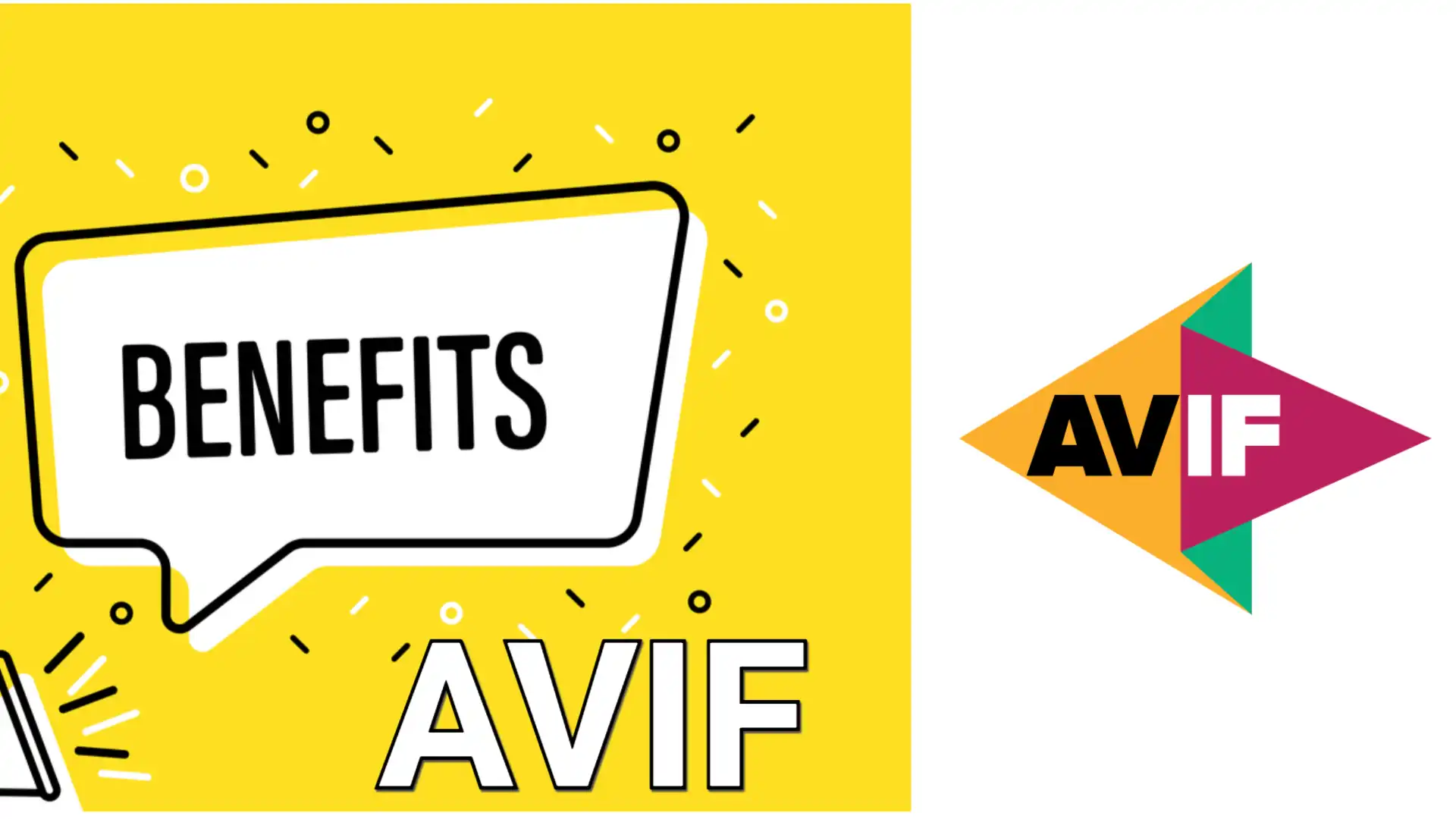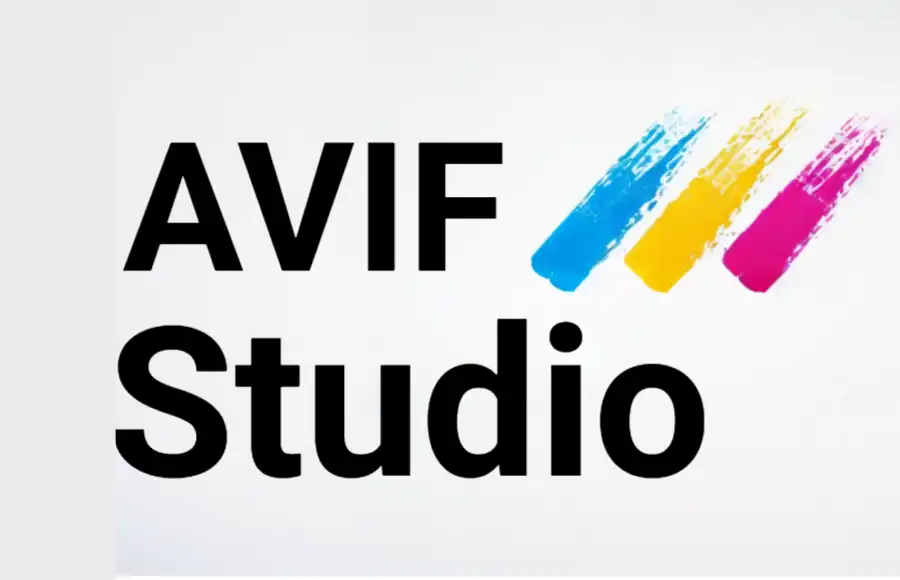Exploring the Benefits of AVIF: A Game-Changer in Image Compression

In the realm of digital content creation and web development, the need for efficient image compression techniques is paramount. As internet bandwidth increases and the demand for high-quality visuals grows, developers and content creators are constantly seeking innovative solutions to deliver superior images without sacrificing performance. Enter AVIF, or AV1 Image File Format, a cutting-edge image format poised to revolutionize the way we handle image compression on the web.
AVIF is the brainchild of the Alliance for Open Media (AOM), a consortium of tech giants including Google, Apple, Microsoft, Amazon, and others. Officially introduced in February 2019, AVIF represents a significant leap forward in image compression technology, building upon the success of the AV1 video codec. What sets AVIF apart from traditional image formats like JPEG, PNG, and even newer formats like WebP? Let's explore some of the key benefits of AVIF:
1. Superior Compression Efficiency:
At the core of AVIF's appeal lies its unparalleled compression efficiency. Leveraging the advanced compression techniques of the AV1 codec, AVIF can encode images with higher fidelity and smaller file sizes compared to other formats. This means that users can enjoy visually stunning images without the burden of large file downloads, resulting in faster load times and reduced bandwidth consumption.
2. Support for High-Quality Imagery:
Unlike some legacy formats that sacrifice image quality for the sake of smaller file sizes, AVIF maintains exceptional visual fidelity even at high compression ratios. This is particularly advantageous for applications requiring crisp, detailed images, such as photography portfolios, e-commerce websites, and digital art galleries. With AVIF, content creators can showcase their work in all its glory without compromising on quality.
3. Wide Range of Color Spaces and Bit Depths:
AVIF offers support for a diverse range of color spaces and bit depths, allowing for accurate representation of colors across various devices and display technologies. Whether it's the vibrant hues of a sunset or the subtle gradients of a portrait, AVIF ensures that colors are rendered faithfully and consistently, enhancing the viewer's experience and preserving the integrity of the original image.
4. Versatility Across Platforms and Devices:
In today's multi-device, multi-platform world, compatibility is key. Fortunately, AVIF is designed to be compatible with a wide range of devices, browsers, and operating systems. Major web browsers such as Google Chrome, Mozilla Firefox, and Microsoft Edge have already started adding support for AVIF, paving the way for widespread adoption across the digital landscape. Additionally, AVIF is compatible with popular image editing software, making it easy for content creators to integrate into their workflows.
5. Future-Proofing for Emerging Technologies:
As technology continues to evolve, so too must our image compression standards. AVIF is built with an eye towards the future, offering support for emerging technologies such as HDR (High Dynamic Range) imaging and wide color gamuts. This ensures that images encoded in AVIF remain relevant and visually stunning across a wide range of display devices, from high-resolution monitors to mobile phones and everything in between.
In summary, the benefits of AVIF are clear: superior compression efficiency, high-quality imagery, compatibility across platforms, and future-proofing for emerging technologies. As the digital landscape continues to evolve, AVIF stands poised to become the new standard in image compression, empowering content creators and developers to deliver stunning visuals with unprecedented efficiency and fidelity. With its impressive capabilities and growing support, AVIF is truly a game-changer in the world of image encoding and compression.
Frequently Asked Questions
- What are the primary advantages of using AVIF over traditional image formats?
- How does AVIF achieve superior compression efficiency compared to other formats like JPEG and PNG?
- In what ways does AVIF support high-quality imagery while maintaining small file sizes?
- What role does AVIF play in preserving color accuracy and fidelity across different devices and platforms?
- How does AVIF contribute to faster load times and reduced bandwidth consumption for web content?
- What browsers and platforms currently support AVIF, and how does this impact its adoption?
- Can you explain how AVIF future-proofs images for emerging display technologies such as HDR imaging?
- What are some practical applications where AVIF's benefits are most evident?
- Are there any drawbacks or limitations to consider when implementing AVIF, despite its benefits?
What are the primary advantages of using AVIF over traditional image formats?
There are several primary advantages of using AVIF over traditional image formats. Firstly, AVIF offers superior compression efficiency, meaning it can achieve smaller file sizes while maintaining high image quality. This is particularly advantageous for web content delivery, as smaller file sizes result in faster load times and reduced bandwidth consumption, leading to improved user experience and lower server costs.
Secondly, AVIF supports a wide range of color spaces, bit depths, and alpha channels, allowing for more accurate representation of colors and smoother gradients in images. This ensures that images encoded in AVIF retain their visual fidelity across different devices and platforms, making them suitable for a variety of applications, from photography and digital art to e-commerce and web design.
Additionally, AVIF is a modern, open-source format that is royalty-free and widely supported by major browsers and platforms. This ensures compatibility and accessibility for both content creators and end-users, making AVIF a versatile and future-proof solution for image compression in the digital age.
How does AVIF achieve superior compression efficiency compared to other formats like JPEG and PNG?
AVIF achieves superior compression efficiency through the use of advanced encoding techniques, particularly those derived from the AV1 video codec. Unlike traditional formats like JPEG and PNG, which primarily use techniques such as discrete cosine transform (DCT) and run-length encoding (RLE), AVIF employs more sophisticated algorithms like intra-frame and inter-frame prediction, as well as entropy coding and adaptive quantization.
These techniques allow AVIF to analyze and exploit both spatial and temporal redundancies in images, resulting in more effective compression. By predicting pixel values within individual frames and across consecutive frames in animations, AVIF can achieve higher compression ratios without perceptible loss in image quality. Additionally, AVIF supports both lossy and lossless compression modes, giving users flexibility in choosing the level of compression according to their specific needs.
In what ways does AVIF support high-quality imagery while maintaining small file sizes?
AVIF supports high-quality imagery while maintaining small file sizes through a combination of advanced compression techniques and support for a wide range of color spaces and bit depths. By leveraging the AV1 video codec's compression algorithms, AVIF can analyze and exploit redundancies in images, resulting in smaller file sizes without compromising visual fidelity.
Furthermore, AVIF's support for a diverse range of color spaces and bit depths ensures accurate representation of colors and smoother gradients, even in highly compressed images. This allows content creators to deliver visually stunning imagery with minimal impact on file size, making AVIF an ideal choice for applications where both image quality and bandwidth efficiency are critical.
What role does AVIF play in preserving color accuracy and fidelity across different devices and platforms?
AVIF plays a crucial role in preserving color accuracy and fidelity across different devices and platforms by supporting a wide range of color spaces, bit depths, and alpha channels. Unlike some legacy formats that are limited to a narrow gamut of colors or lack support for alpha transparency, AVIF allows for precise representation of colors and smooth blending of images with the background.
Additionally, AVIF's advanced compression techniques ensure that color information is preserved faithfully during encoding and decoding, minimizing the loss of detail and ensuring consistent color reproduction across devices. This makes AVIF well-suited for applications where color accuracy is paramount, such as professional photography, graphic design, and digital imaging.
How does AVIF contribute to faster load times and reduced bandwidth consumption for web content?
AVIF contributes to faster load times and reduced bandwidth consumption for web content primarily through its superior compression efficiency. By achieving smaller file sizes compared to traditional formats like JPEG and PNG, AVIF reduces the amount of data that needs to be transferred over the network, resulting in faster downloads and reduced server costs.
Furthermore, AVIF's support for both lossy and lossless compression modes allows content creators to optimize images according to their specific requirements, further reducing file sizes without sacrificing visual quality. This ensures that web pages load quickly and efficiently, even on devices with limited bandwidth or slower internet connections.
What browsers and platforms currently support AVIF, and how does this impact its adoption?
AVIF is currently supported by major web browsers such as Google Chrome, Mozilla Firefox, and Microsoft Edge, as well as platforms and services like Android, iOS, and macOS. This broad support across browsers and platforms has a significant impact on the adoption of AVIF, as it ensures compatibility and accessibility for both content creators and end-users.
As more browsers and platforms add support for AVIF, developers and content creators are increasingly inclined to adopt it as their preferred image format. This trend is further reinforced by the growing awareness of AVIF's benefits, such as superior compression efficiency, high image quality, and future-proofing for emerging display technologies. Overall, the widespread support for AVIF positions it as a versatile and future-proof solution for image compression in the digital age.
Can you explain how AVIF future-proofs images for emerging display technologies such as HDR imaging?
AVIF future-proofs images for emerging display technologies such as HDR (High Dynamic Range) imaging by supporting a wide range of color spaces, bit depths, and dynamic range. Unlike some legacy formats that are limited to standard dynamic range (SDR) images, AVIF allows for the encoding of high-fidelity HDR content, including a broader range of colors and luminance levels.
Furthermore, AVIF's support for advanced features like alpha transparency and lossless compression ensures that HDR images encoded in AVIF retain their visual integrity across different devices and platforms. This makes AVIF well-suited for applications where accurate reproduction of HDR content is critical, such as professional photography, digital cinema, and virtual reality.
What are some practical applications where AVIF's benefits are most evident?
There are several practical applications where AVIF's benefits are most evident. One such application is web content delivery, where AVIF's superior compression efficiency and support for high-quality imagery contribute to faster load times and reduced bandwidth consumption. This is particularly advantageous for e-commerce websites, digital art galleries, and photography portfolios, where large numbers of images need to be served to users quickly and efficiently.
Additionally, AVIF is well-suited for applications where color accuracy and fidelity are paramount, such as professional photography, graphic design, and digital imaging. Its support for a wide range of color spaces and bit depths ensures that images retain their visual integrity across different devices and platforms, making it an ideal choice for creating visually stunning and immersive experiences.
Are there any drawbacks or limitations to consider when implementing AVIF, despite its benefits?
While AVIF offers numerous benefits, there are also some drawbacks and limitations to consider when implementing it. One potential limitation is the relatively limited support for AVIF in older or less commonly used web browsers and software applications. Although support for AVIF is expanding rapidly, there may still be instances where users encounter compatibility issues or degraded performance when viewing AVIF images.
Additionally, the encoding and decoding processes for AVIF images can be computationally intensive, especially for complex or high-resolution content. This could result in longer processing times and increased resource utilization compared to simpler formats like JPEG. Furthermore, the adoption of AVIF may require updates to existing infrastructure and workflows, which could involve additional time and effort for migration.
